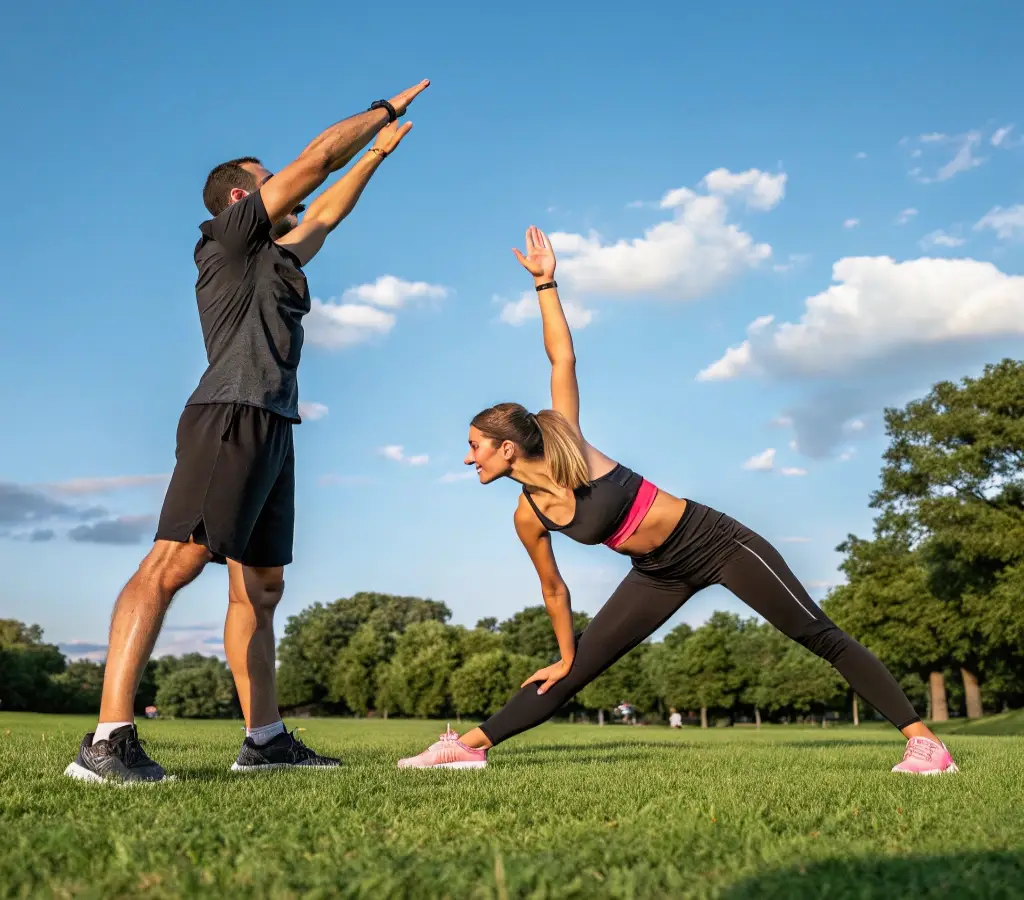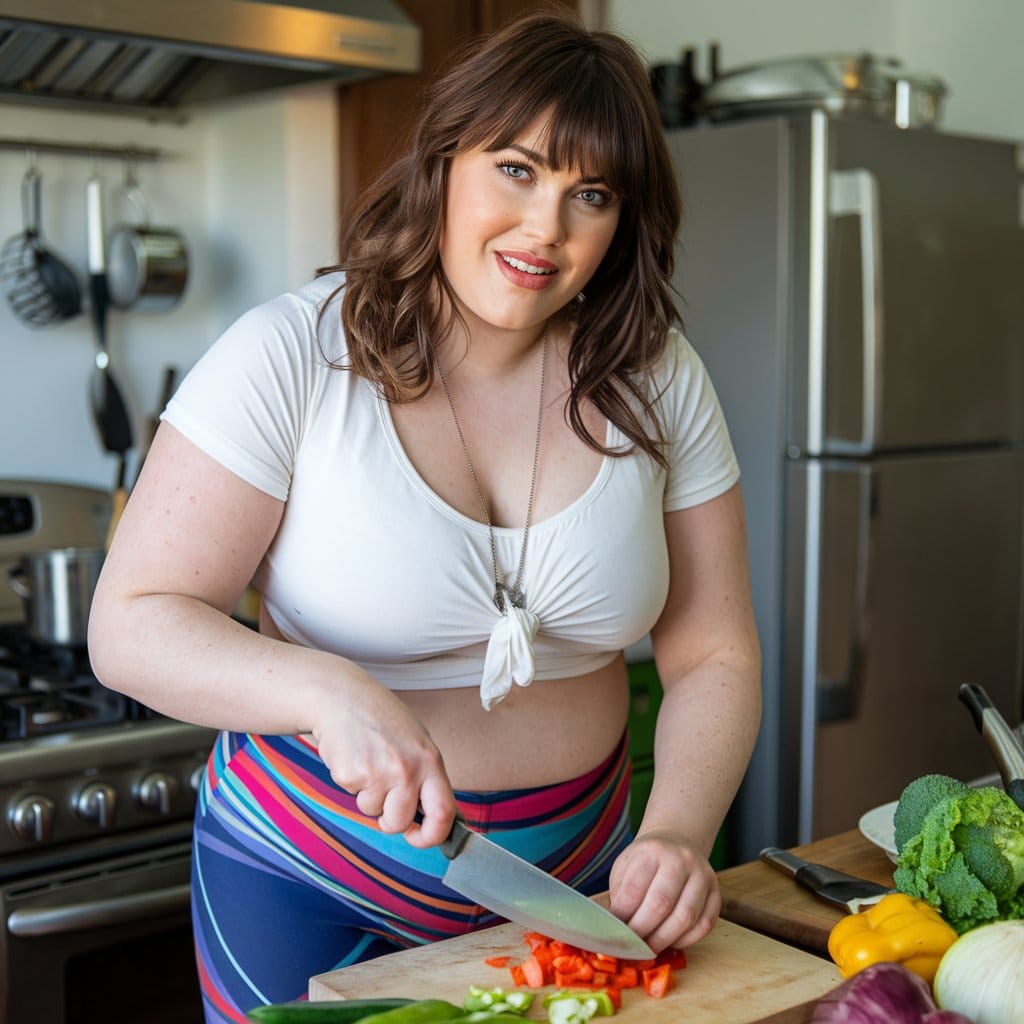Did you know 30% of Americans suffer from chronic muscle pain from sitting too long? This pain isn’t just annoying—it also makes moving harder and increases the chance of getting hurt. Whether you sit at a desk, play sports, or just like to stay active, your body needs special care.
These 5 essential stretches can change how you move. They help ease tension and improve how well you perform in sports. Mayo Clinic says warming up first is key: 5–10 minutes of light activity gets your muscles ready and lowers injury risks. Stretching right can also improve blood flow, protect your joints, and help you stand up straighter.
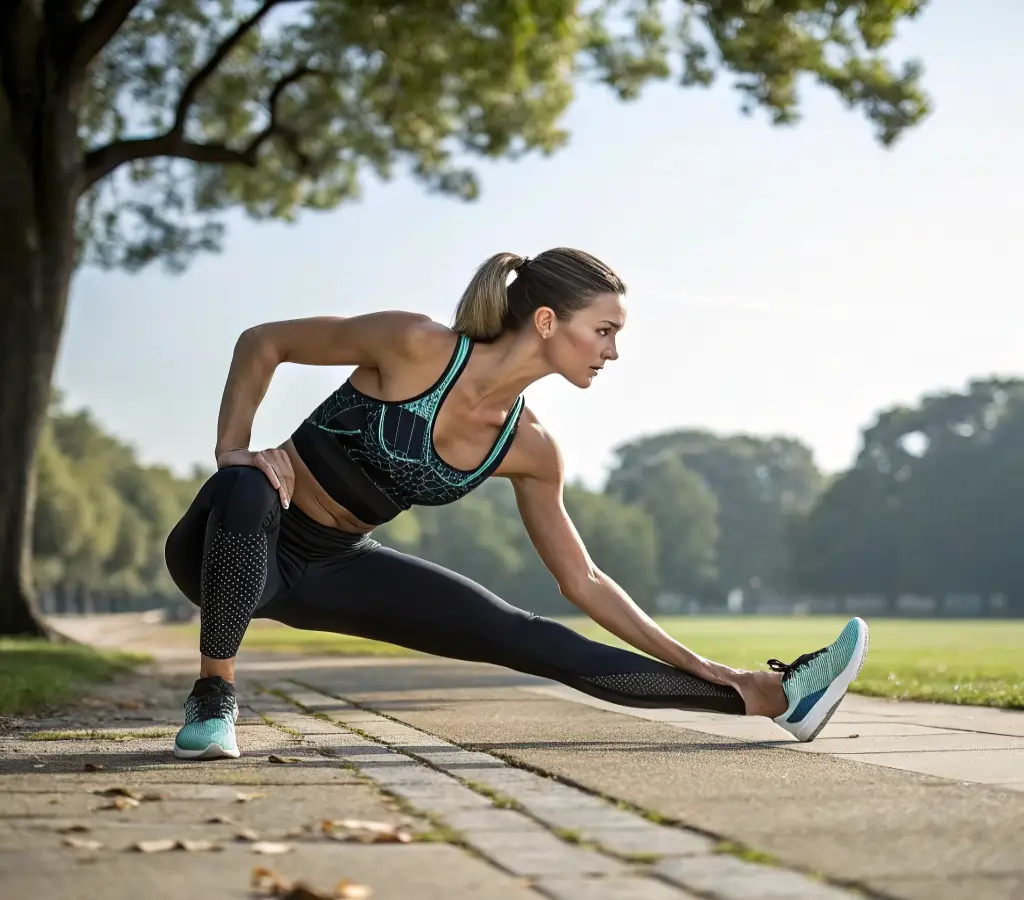
Stretches like the Dynamic Hip Flexor or Seated Forward Fold can help with everyday aches. By stretching for 30 seconds, 2–3 times a week, you’ll start to feel better. But remember, don’t stretch cold muscles, and avoid knee-to-chest stretches if you have osteoporosis. These stretches are easy to do without any special gear. Are you ready to move better? Let’s explore how these stretches can help your body feel better and stronger.
Key Takeaways
- Warm up 5–10 minutes before stretching to avoid injury.
- Hold stretches 30 seconds, repeating 2–4 times weekly.
- Body stretches like the Standing Quad Stretch reduce lower back strain.
- Consult a doctor if you have health conditions.
- Improved flexibility lowers injury risks in daily activities and sports.
The Importance of Regular Stretching for Your Body
Learning about body stretches starts with muscle fibers. When you do flexibility exercises, you stretch muscles and loosen the tissue around them. This makes muscles more elastic and helps them move better.
Doing this regularly changes how your muscles work. It makes your body more flexible and adaptable.
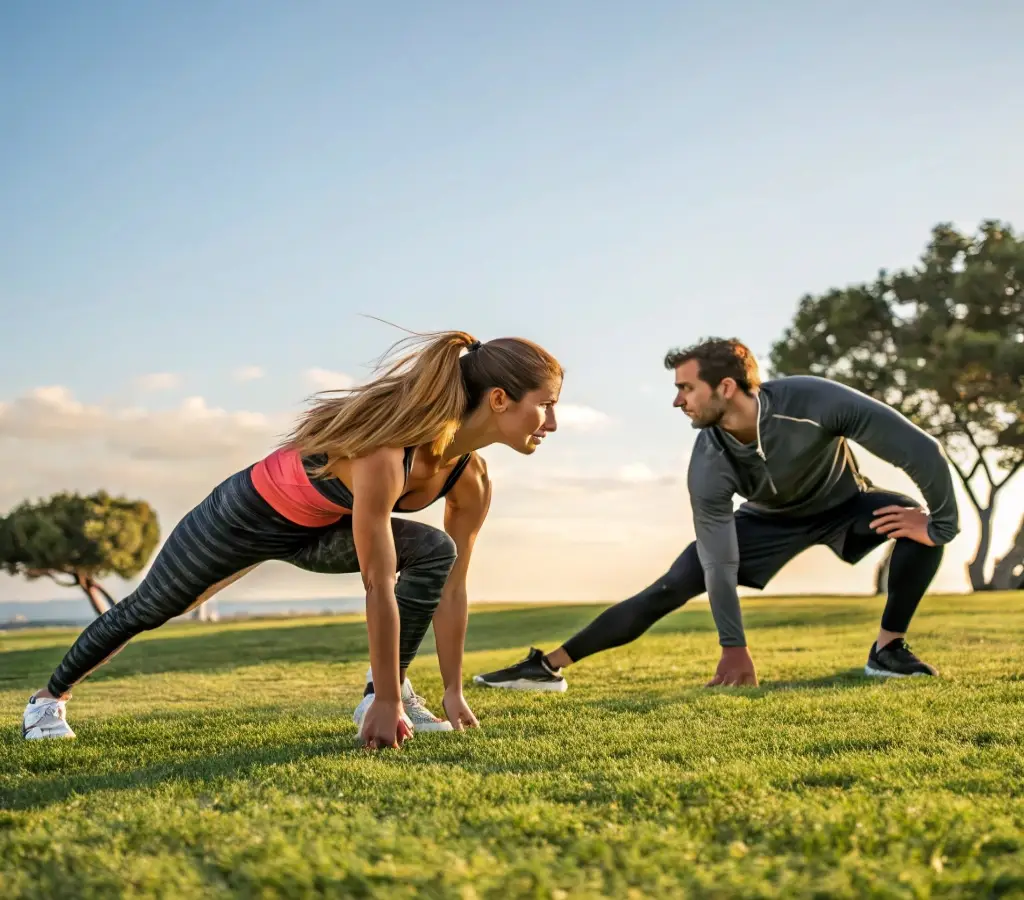
Physical and Mental Benefits of a Stretching Practice
“By stretching your muscles in this way, blood flow increases to your muscles and joints, allowing you to be more physically active.”
Studies show that flexibility exercises have many benefits. A 2019 study found that just 10 minutes of yoga and stretching can lower stress and improve thinking skills. Stretching affects many areas positively:
| Benefit | Key Finding |
|---|---|
| Muscle recovery | Shortens post-workout soreness (DOMS) by improving circulation |
| Back health | 80% of adults experience back pain, but stretching strengthens supporting muscles to reduce strain |
| Cardiovascular health | 2020 study: Regular stretching lowered blood pressure and arterial stiffness |
Common Misconceptions About Flexibility Training
- “You must be flexible to start.” Flexibility exercises improve over time—beginners can start gently.
- “Stretching before exercise prevents injury.” Dynamic movements, not static holds, are better for pre-activity prep.
- “Stretching once a week is enough.” Experts recommend 2–3x weekly for lasting gains.
How Stretching Affects Your Muscle Tissue
Stretching makes muscle fibers longer and the tissue around them less stiff. PNF stretching, which uses a partner or resistance, can lead to faster gains. This is because it overcomes the body’s natural resistance to stretching.
Consistency is key. Even a short stretch of 5–10 minutes a day can help with pain and improve movement. Don’t let myths guide your stretching routine. Let science be your guide.
How Flexibility Impacts Your Overall Health and Wellness
Muscle flexibility is key for everyone, not just athletes. It helps your body move better, reducing stress on joints and muscles. Regular stretching can cut injury risk by 50% and ease muscle tension by 30%, helping you relax for the long term.
“Stretching exercises are vital for maintaining mobility, as we age. They help preserve independence and support cardiovascular health,” emphasizes the American Heart Association.
Research shows clear benefits:
| Benefit | Statistic |
|---|---|
| Balance improvement | 25% better stability with yoga practices |
| Injury prevention | 50% lower injury risk with consistent stretching |
| Pain reduction | 30% decrease in muscle soreness reported by users |
| Mental well-being | 40% improvement in mental health scores |
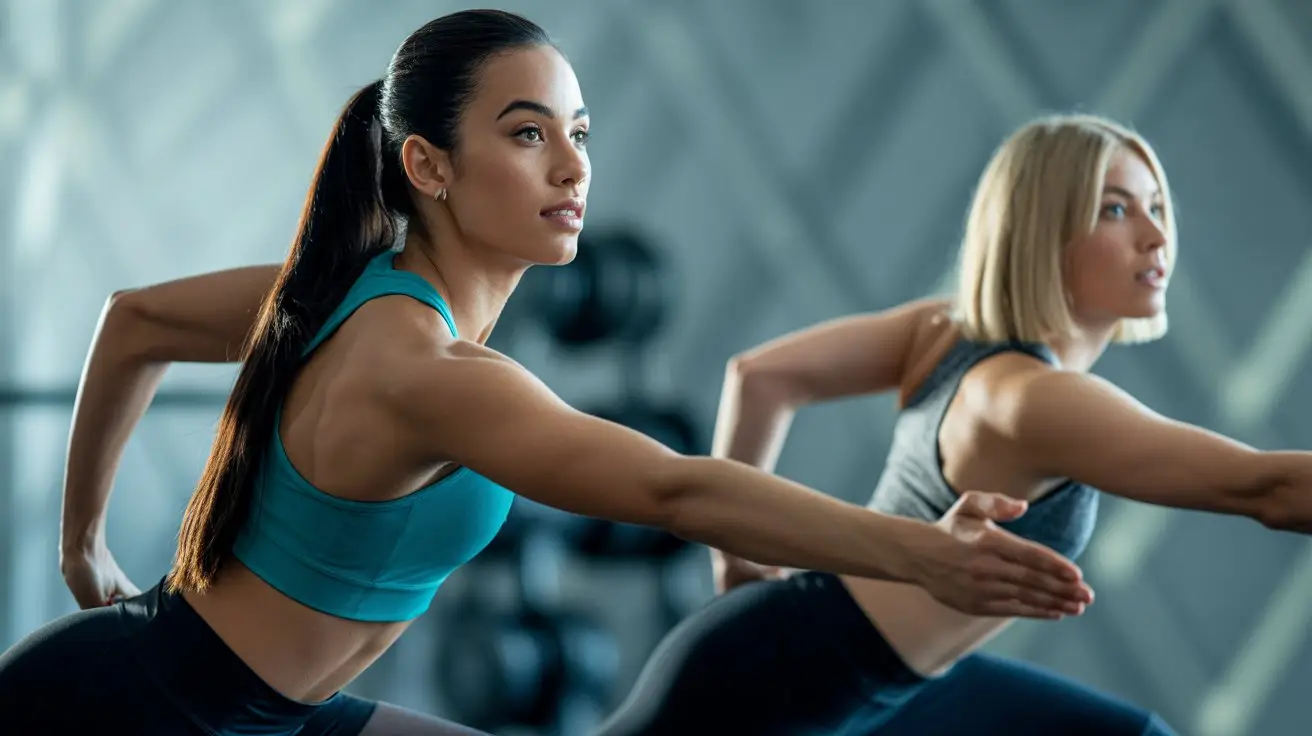
Being flexible improves your posture, reducing back pain and boosting organ function. It also makes you more balanced, lowering fall risks in older adults by up to 20%. Even short stretches—10–20 minutes, 3–4 times a week—can increase joint mobility by 15–30% in months. Remember to stretch with warm-ups to avoid injury, focusing on big muscle groups like hips, hamstrings, and shoulders.
Flexibility training is good for both body and mind, helping you move with ease and confidence all your life. Make it a part of your overall wellness plan.
When to Incorporate Stretches Into Your Daily Routine
Timing your stretching practice is key to getting the most out of it. A good stretching routine boosts energy, aids in recovery, and helps you relax. Here’s how to fit stretches into your day for the best results.
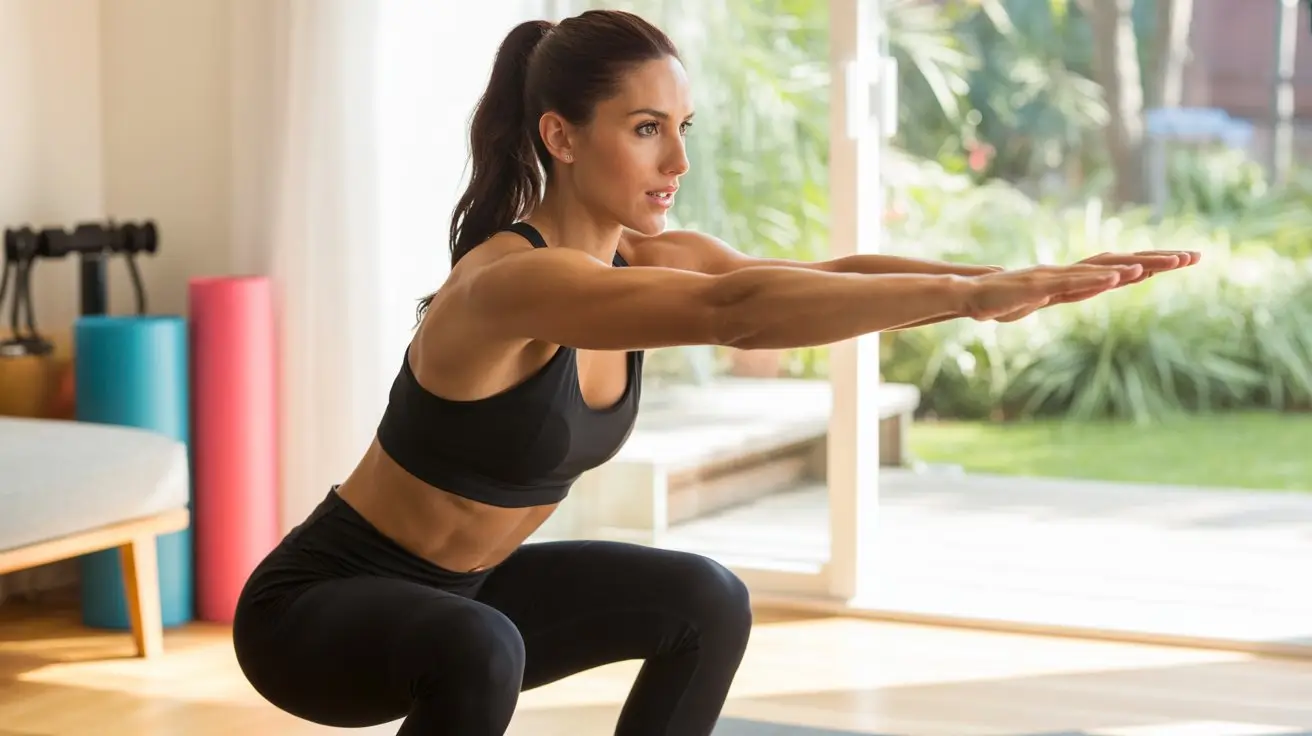
Morning Stretching Benefits
Starting your day with 5-10 minutes of stretching gets your blood flowing and loosens stiff muscles. Try cat-cow stretches or side bends to wake up your muscles. This gets you ready for the day’s activities and helps prevent morning stiffness. Regular morning stretches improve flexibility over time.
Pre and Post-Workout Stretching Guidelines
Before you exercise, do dynamic stretches like leg swings or arm circles. These prepare your muscles for the workout.
Stretching cold muscles can increase injury risk, so save static holds for post-workout.
After working out, hold stretches like hamstring or quad holds for 20-30 seconds. This improves muscle elasticity. Studies show that post-exercise static stretching reduces soreness and helps with recovery.
Evening Relaxation Stretches for Better Sleep
End your day with slow stretches like child’s pose or hip openers. These stretches help relax your body and reduce muscle tension from sitting. Even a short session before bed can help you sleep better by telling your body it’s time to relax.
The Hamstring Stretch: Releasing Tension in Your Lower Body
Hamstrings are the muscles at the back of your thighs. They often get tight from sitting too much or using them too much. Up to 80% of active people feel this tightness, which can hurt your lower back and make moving harder. One of the 5 essential stretches to soothe your body and improve your flexibility helps these muscles. Here’s how to do it safely:
- Position yourself near a wall, lying on your back. Lift one leg toward the wall, resting your heel against the surface while keeping a slight knee bend.
- Slowly straighten the lifted leg until you feel a gentle stretch along the back of your thigh. Hold for 15–30 seconds, then switch sides.
For deeper results, try these body stretches variations:
- Seated Forward Fold: Sit with legs extended, hinge forward from your hips, and reach for your toes.
- Half-Kneeling Lunge: Kneel on one knee, extend the other leg forward, and lean back to stretch the extended hamstring.
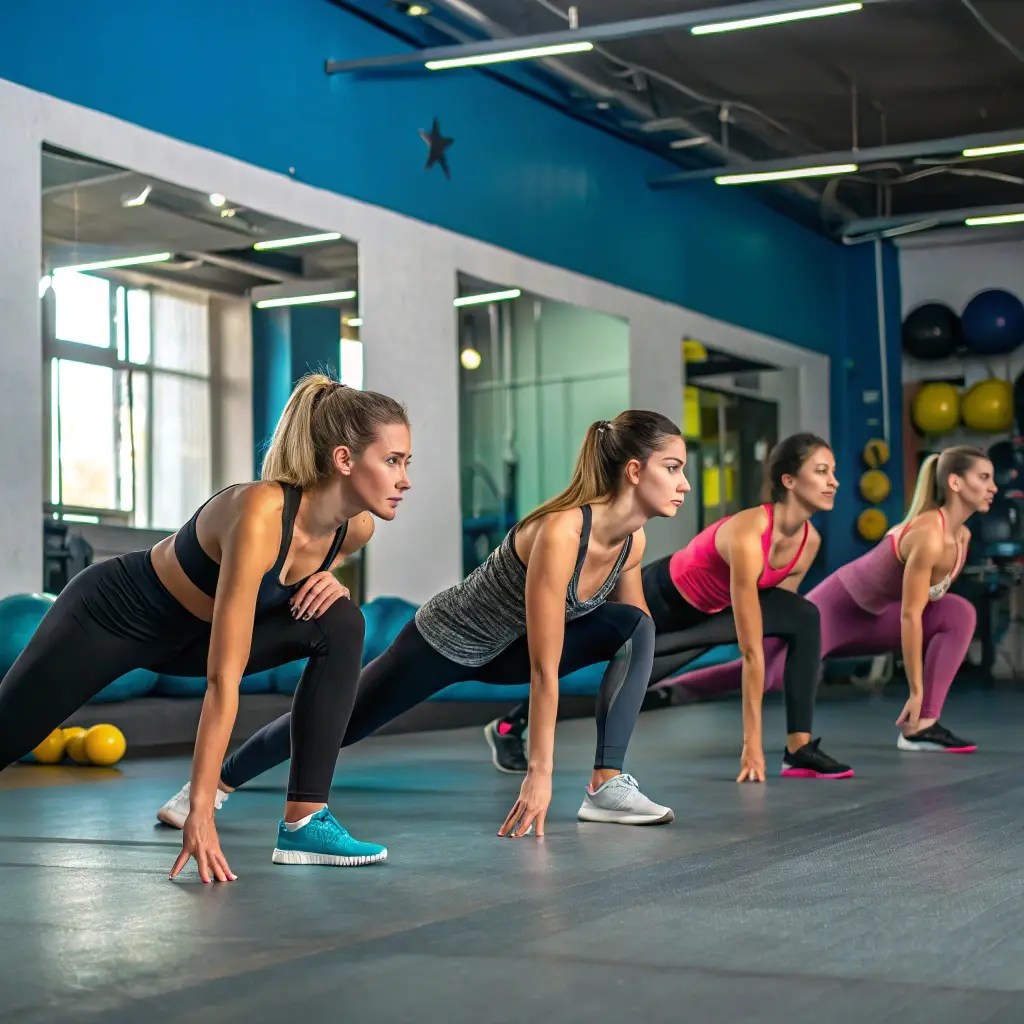
Avoid rounding your lower back during the stretch to protect your spine. Over 30% of lower back pain cases link to tight hamstrings, so consistency matters. Studies show static stretching can boost flexibility by 10–30% over weeks of practice. Pair this move with foam rolling for added gains.
Incorporate this stretch 3–5 times weekly. Over time, you’ll notice better posture, reduced injury risk, and less back discomfort. Remember: progress takes time, so approach each session with patience.
Upper Body Relief: The Shoulder and Chest Opener
Stiff shoulders and rounded posture from screen time can hurt muscles and limit movement. The shoulder and chest opener helps by stretching these areas. Studies show it improves posture and lessens pain, making it key for fighting modern lifestyle effects.
Proper Form and Technique
Start by standing up straight or sitting upright. Cross your fingers behind your back, with palms facing out. Slowly lift your arms away from your backside, keeping your shoulders relaxed.
Hold for 10–15 seconds, then increase to 30 seconds. For a deeper stretch, place one hand on a wall and twist gently to the side. Hold for 10–15 seconds on each side.
Modifications for Different Fitness Levels
| Beginner | Advanced |
|---|---|
| Use a towel to loop behind the back for easier reach. | Try a doorway stretch: Stand in a doorway with one arm on the frame at 90 degrees, lean forward to deepen the stretch. |
Common Mistakes to Avoid
- Avoid shrugging shoulders toward ears—this tightens neck muscles.
- Don’t hold breath; inhale deeply to expand chest during the stretch.
- Never force arms past comfortable range to prevent strain.
“The NHS recommends combining this stretch with strengthening exercises to address shoulder imbalances.”
Do this stretch 2–3 times a week for the best results. Mix it with dynamic warmups like arm circles to safely increase mobility. Regular practice helps undo muscle shortening from sitting, improving comfort and function over time.
5 Essential Stretches to Soothe Your Body and Improve Your Flexibility
Make these five stretches a part of your daily stretching routine to boost your body’s mobility. Start with the hamstrings, then move to the shoulders, hips, cervical spine, and quadriceps. Hold each stretch for 30 seconds and repeat 2–3 times for the best results.
| Step | Stretch Name | Target Area | Benefit |
|---|---|---|---|
| 1 | Hamstring Stretch | Lower back, calves | Reduces sitting-induced stiffness |
| 2 | Shoulder Opener | Upper back | Improves posture and shoulder mobility |
| 3 | Hip Flexor Stretch | Hips/glutes | Alleviates lower back pain linked to tight psoas muscles |
| 4 | Cervical Stretch | Neck | Relieves tension from screen use |
| 5 | Quadriceps Stretch | Thighs joints | Supports knee alignment and daily movement |
Start with two sets and increase as your flexibility grows. Fitness expert Tom Merrick suggests being consistent, even if it’s just five minutes a day. This is better than infrequent, long sessions.
If you feel sharp pain, stop immediately. Talk to a healthcare provider before starting if you have injuries. Increase your stretches slowly to avoid injury. Move smoothly and carefully to safely improve your flexibility over time.
The Hip Flexor Stretch: Unlocking Your Mobility
Many people don’t pay much attention to their hip flexors. But these muscles, like the iliopsoas, are very important for moving around. When they get tight, it can pull your pelvis forward, causing your lower back to strain.
Sitting for long periods can make this problem worse. Studies show that 80% of people who sit a lot at work have hip or back pain. Doing flexibility exercises for these muscles can help fix your posture and ease the strain.
Why Tight Hip Flexors Affect Your Posture
Sitting for too long can make your hip flexors shorter. This weakens your glutes and hamstrings. As a result, your pelvis tilts forward, leading to lower back pain.
The psoas muscle, which connects your spine to your leg, also gets tighter over time. More than 60% of people who don’t move much have stiff hips. This makes it hard to do things like climb stairs or cycle. Doing regular stretches can make your muscles more flexible, lowering injury risk by up to 40%.
Step-by-Step Guide to Perfect Hip Flexor Stretches
- Kneel on your right knee with a folded towel under your knee for padding.
- Place your left foot forward, forming a lunge position. Keep your torso upright, engaging core muscles.
- Press hips forward until you feel a stretch in the front of your right thigh. Hold for 30 seconds, then switch sides.
Advanced Variations for Experienced Stretchers
When you get better, try these dynamic moves:
- Lunge twists to engage obliques while stretching
- Standing hip flexor stretches using a wall for support
- Resistance band-assisted stretches for deeper engagement
Remember to breathe deeply while stretching. Doing this 3-4 times a week can improve your mobility by 20% in just 6 weeks.
Spine Health: The Cat-Cow Stretch Sequence
Keeping your spine flexible is key to avoiding back pain and moving better every day. Body relaxation begins with a healthy spine, but 60%–80% of adults will experience back pain. The cat-cow stretch helps loosen your spine, making it easier to move and improving nerve health. Here’s how to do it:
- Start on hands and knees, with wrists under shoulders and knees under hips.
- Breathe in, arch your back like a cat, and tuck your chin to your chest (cow pose).
- Breathe out, round your spine like a cat, lift your tailbone, and pull your belly in (cat pose).
Do this motion 10–15 times, matching your breath with your movements. It helps ease pressure on your spine and boosts blood flow. If your wrists or knees hurt, use a towel or stretch while seated.
Doing this stretch regularly can cut down on chronic pain, with studies showing a 58% pain reduction in four weeks. It also helps fight the stiffness caused by sitting too long. Add it to your daily stretching routine with exercises like the bridge or pelvic tilt for better spine health.
- Strengthens core muscles to support your spine
- Improves posture by balancing muscle tension
- Reduces risks of disc degeneration with regular practice
Start with this stretch in the morning or after sitting for 90 minutes to relax your body. If you have ongoing pain, talk to a healthcare provider before starting new routines. Deep breathing can enhance the relaxation benefits even more.
Equipment and Props to Enhance Your Stretching Experience
Using the right tools can make your stretching better. Foam rollers and massage balls help loosen tight muscles. They make stretches deeper and more effective.
Foam Rollers and Massage Balls
Foam rollers like theFitness Gear 24” Foam Roller($16.99) or theGaiam Restore Muscle Therapy Foam Roller($24.99) are great for self-massage. Use them on your calves, quads, or back to get ready for stretching. Massage balls, like theSPRI Resistance Ball Set, target smaller muscles.
Using these tools with dynamic stretches can lower injury risk. The Mayo Clinic says balance exercises help older adults stay mobile.
Yoga Straps and Blocks
Yoga straps like theGaiam Restore Stretch Strap($19.99) help you stretch deeper without overdoing it. Blocks, like theFitness Gear Yoga Block Set($16.98), support you in seated or standing poses. They help beginners keep their body right during stretches.
Creating a Comfortable Stretching Environment
A quiet space with a good yoga mat (e.g.,iFit Home Studio Mat, $32.99) helps you focus. Keep the room at 68–72°F and use soft lights. Even a small area is fine, as long as it’s safe and comfy.
Being consistent is key, whether you use props or not. Start with simple tools like foam rollers or straps. Make your space fit your needs. Every small step makes your practice safer and deeper.
Designing Your Personal Flexibility Program for Long-Term Success
Creating a lasting stretching routine begins with knowing your body’s needs. Start by checking your muscle flexibility with simple tests like the sit-and-reach or shoulder rotations. Aim to add 5 seconds to each stretch each week.
- Choose 3-5 stretches from the five essentials covered earlier. Focus on tight areas like hamstrings or hips.
- Plan 2-3 sessions a week, holding stretches for 30 seconds each.
- As you get better, increase the stretch’s intensity. Use resistance bands or foam rollers to deepen the stretch.
| Time | Focus | Stretches to Include |
|---|---|---|
| Morning | Wake-up and circulation | Spine twists, hip openers |
| Midday | Stress relief | Shoulder openers, chest stretches |
| Evening | Relaxation | Hamstring stretches, child’s pose |
Consider your age and activity level. Older adults should try low-impact activities like tai chi to protect their joints. Athletes might include dynamic stretches before exercising. Check your progress every month by retesting your flexibility.
Combine stretching with foam rolling to improve muscle recovery. The American Heart Association suggests mixing flexibility with strength and balance exercises for overall health. Stay consistent, even on busy days, with quick 5-minute routines.
Conclusion: Integrating These Stretches Into Your Lifestyle for Lasting Flexibility
Adding the 5 essential stretches to your daily routine can change how you move and feel. Just a few minutes each day can help loosen tight muscles in your hamstrings, shoulders, and hips. Mayo Clinic says stretching regularly improves joint mobility and lowers injury risk.
Flexibility naturally decreases after 30, but consistent stretching can help. Start with a simple hamstring stretch in the morning or a cat-cow sequence before bed. Using foam rollers or yoga straps can make your stretches more effective. Remember, it’s the regular effort that leads to lasting change, not perfection.
Stretching does more than just loosen muscles. It also helps relax your body and reduce stress in your shoulders and neck. Over time, you’ll notice better posture, less back pain, and improved sports performance. Dynamic stretches before working out can enhance your performance, while static stretches after can help you recover.
Start with just one stretch today. It could be a hip flexor release after sitting or a chest opener at your desk. Celebrate every small improvement, like standing taller or reaching further. These stretches build a strong foundation for mobility, supporting your daily activities and protecting your joints from stiffness as you age.
